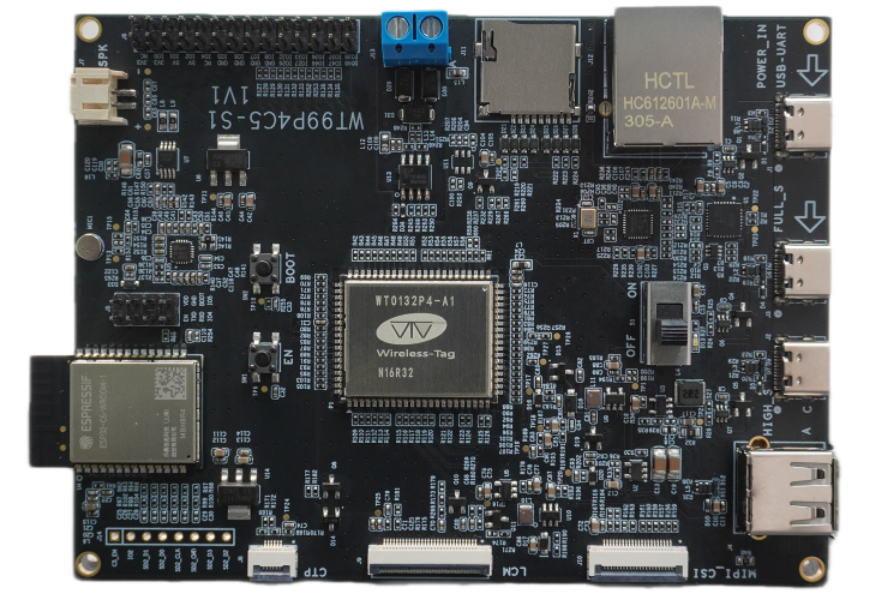
DEV-ESP0006 - WirelessTag ESP32P4 Development Board
Overview
The WT99P4C5-S1 development board is launched by Wireless-Tag. It is a multimedia development board designed based on the WT0132P4-A1 core board, which can meet customers' development needs for multimedia products.
The development board has exposed a Wi-Fi module package for communication with the WT0132P4-A1 core board. During development, it supports optional Espressif ESP32-C5-WROOM-1 series dual-band Wi-Fi 6 modules for Wi-Fi and Bluetooth communication development; This development board is highly suitable for prototyping IPC, HMI, and AIoT products. Most pins of the core board are brought out to pin headers, allowing developers to easily connect various devices via jumpers according to actual needs, and the board can also be plugged into a breadboard for use.

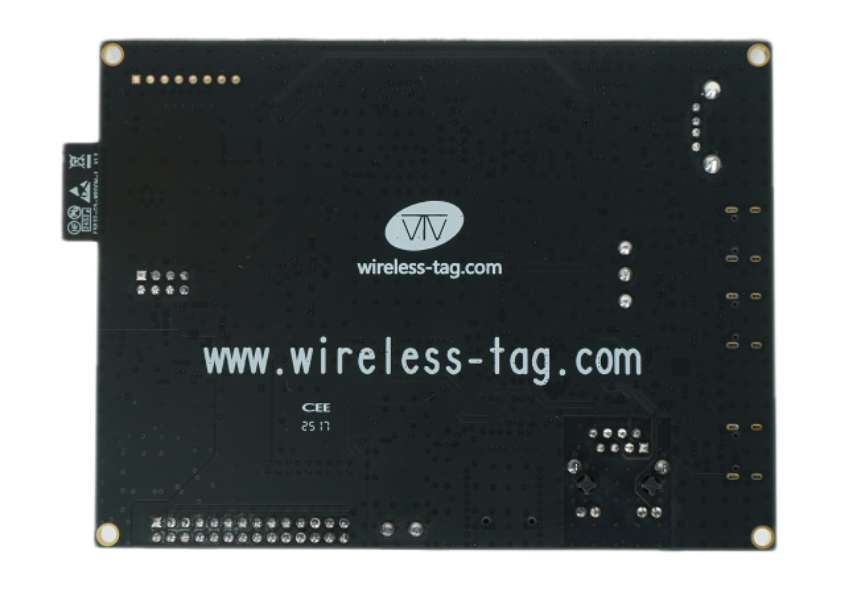
Powerful ESP32-P4 Chip
The ESP32-P4 is powered by a dual-core RISC-V CPU featuring AI instruction extensions, an advanced memory subsystem, and integrated high-speed peripherals. It's tailored for high-performance applications demanding robust security. Positioned for the forthcoming era of embedded applications, the ESP32-P4 targets solid support for rich Human-Machine Interfaces, efficient edge computing, and increased IO-connectivity demands.
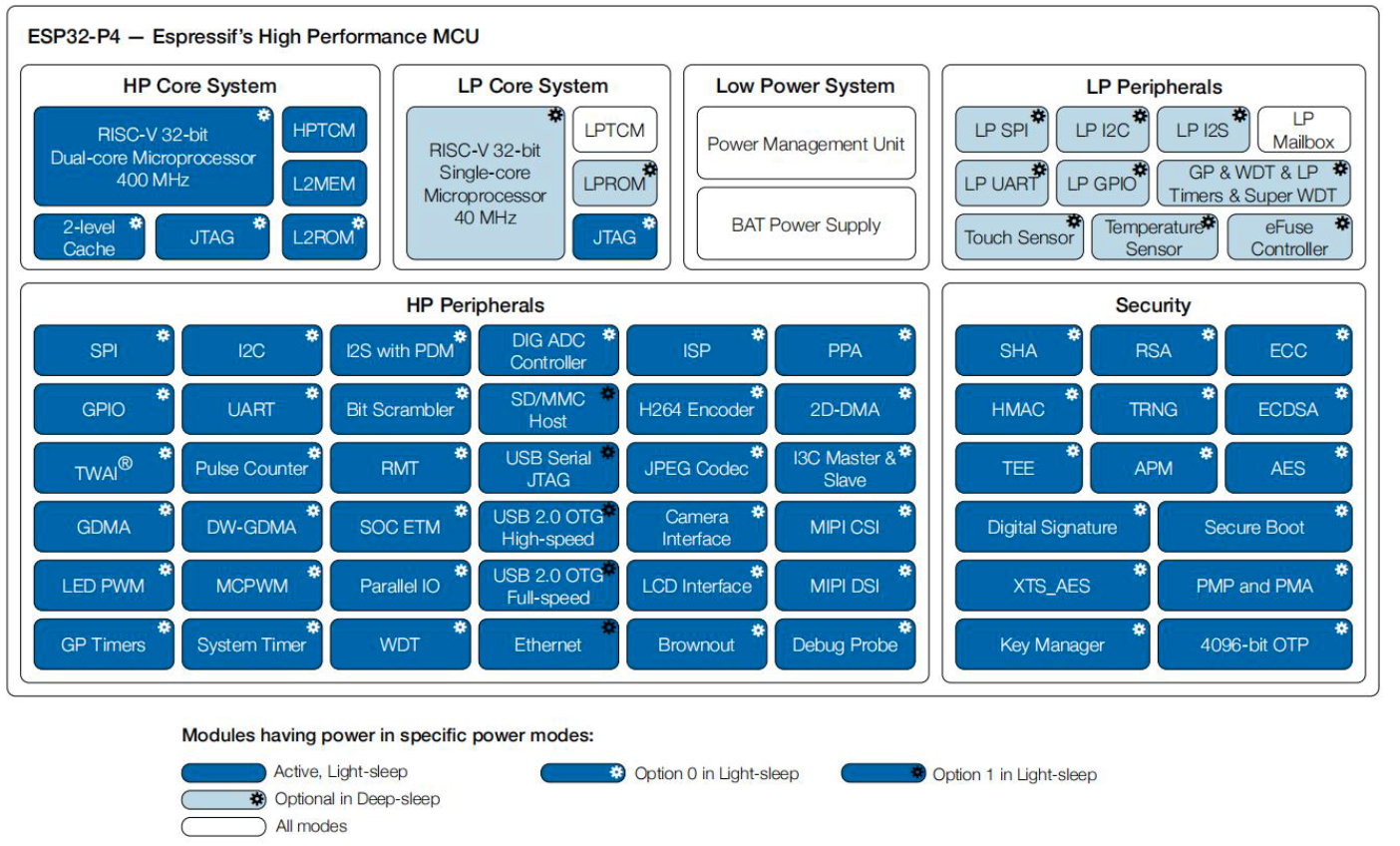
High-performance
Powered by a dual-core RISC-V CPU running at speeds up to 400 MHz, the ESP32-P4 also boasts support for single-precision FPU and AI extensions, providing essential computational resources. Furthermore, it integrates an LP-Core capable of running at up to 40 MHz, crucial for supporting ultra-low-power applications that may intermittently require high computing power. In such instances, the HP cores can remain dormant for most of the time to conserve power. The ESP32-P4 features a highly flexible and adaptable memory subsystem to meet diverse application needs. Its HP core system includes 768 KB of on-chip SRAM, accessible as cache when external PSRAM is available, along with 8 KB of zero-wait TCM RAM
Highly Integrated Peripherals
The ESP32-P4 boasts 55 programmable GPIOs, a significant increase compared to any previous Espressif SoC. It supports a comprehensive range of commonly used peripherals including SPI, I2S, I2C, LED PWM, MCPWM, RMT, ADC, UART, and TWAI™. Additionally, it offers support for USB OTG 2.0 HS, Ethernet, and SDIO Host 3.0, facilitating high-speed connectivity.
ESP32-P4 Development Board Features
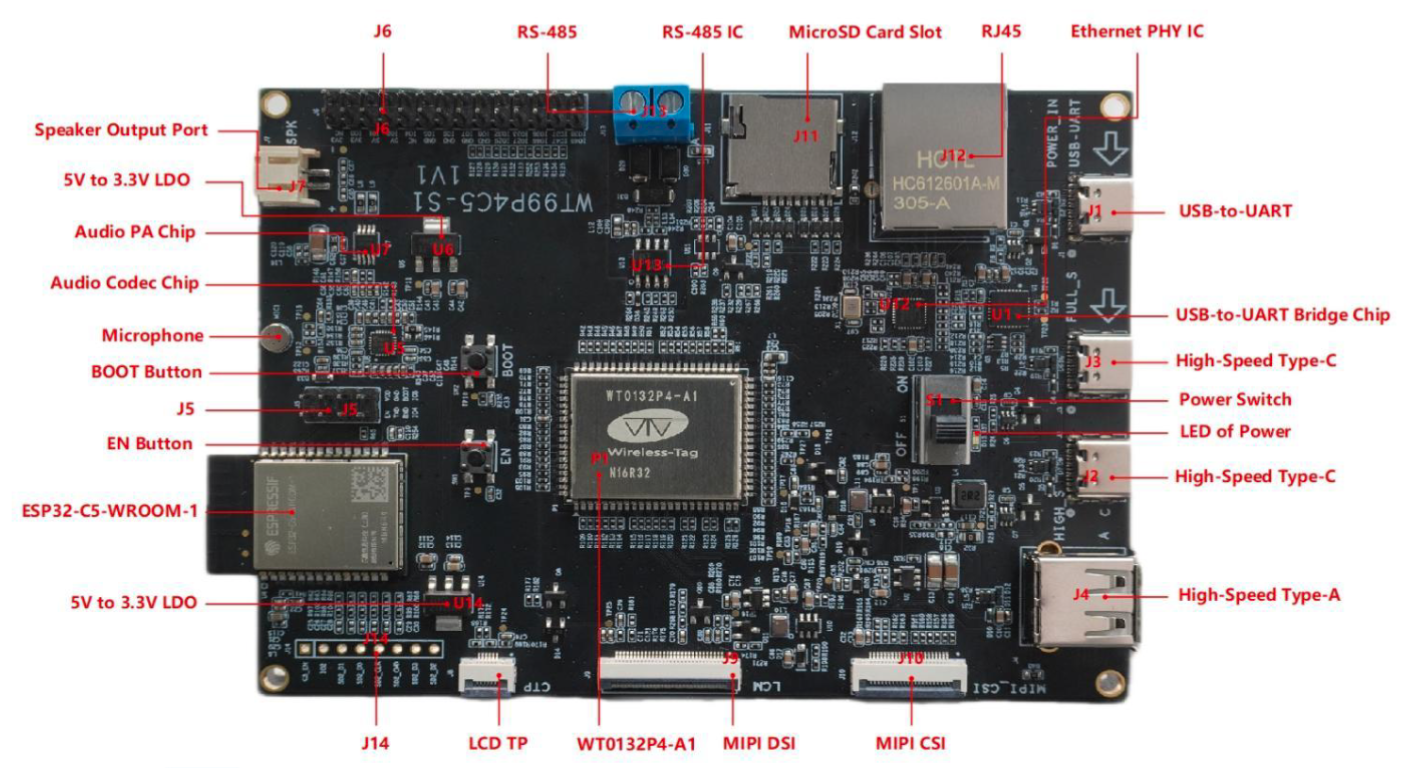
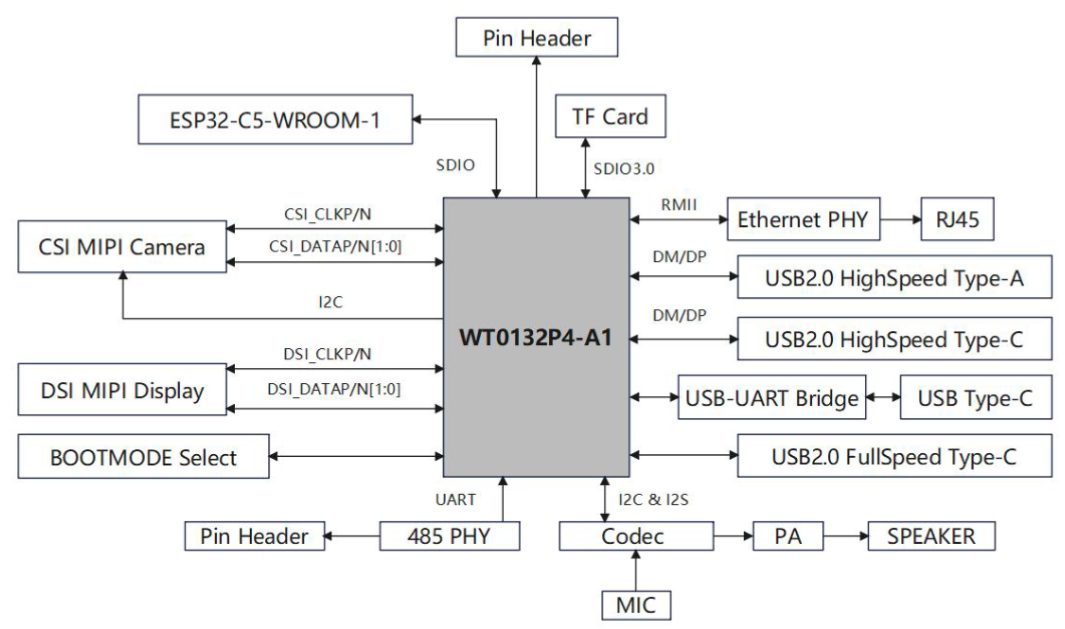
- Main Chip - ESP32-P4 with dual-core RISC-V CPU featuring AI instruction extensions
- CPU Frequency Up to 400MHz for HP, 40MHz for LP
- ROM - 128KB HP ROM & 16KB LP ROM & RAM - 768KB HP L2MEM & 32KB LP SRAM & 16MB FLASH
- 32MB PSRAM
- WiFi6 Module with ESP32-C5 Module
- Support 2.4&5.0GHz WiFi6 & IEEE 802.5.14 & BLE 5.3
- 100Mbps Ethernet Interface x 1
- Audio Codec Chip - ES8311 with Audio Class-D Amps NS4150B
- Support MIPI CSI-2, DVP, USB and so on Camera Interface
- Support MIPI DSI, TFT RGB & LCD TP Interface for Display
- Support USB2.0 Interface x3
- Micro-phone x1
- RS485 Interface x1
- SD Card Interface x1
- USB to UART for Debug
User Guide
WT99P4C5-S1 Development Board User Guide
Examples
TBD